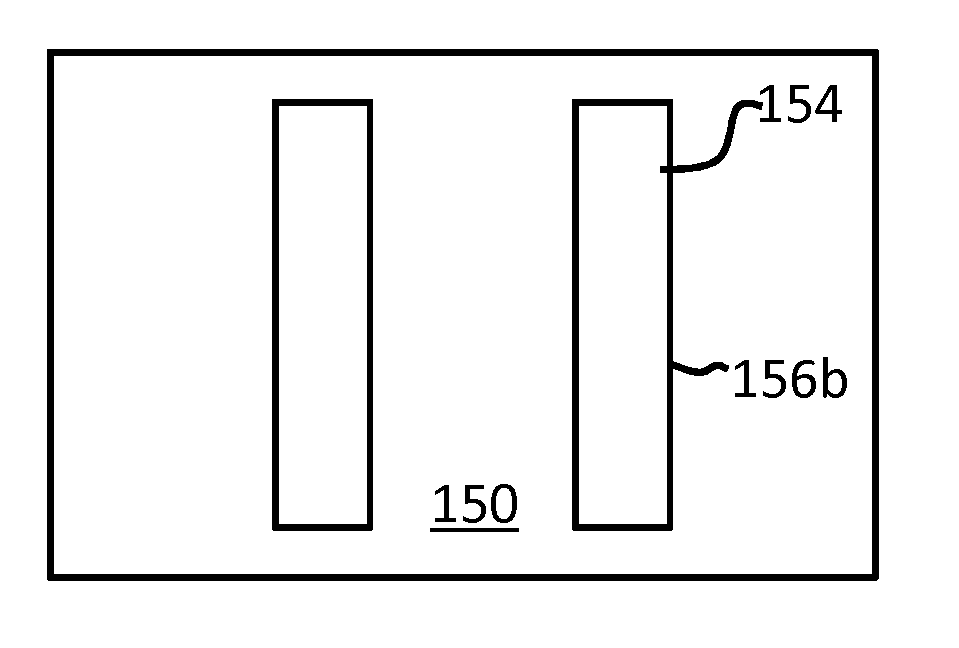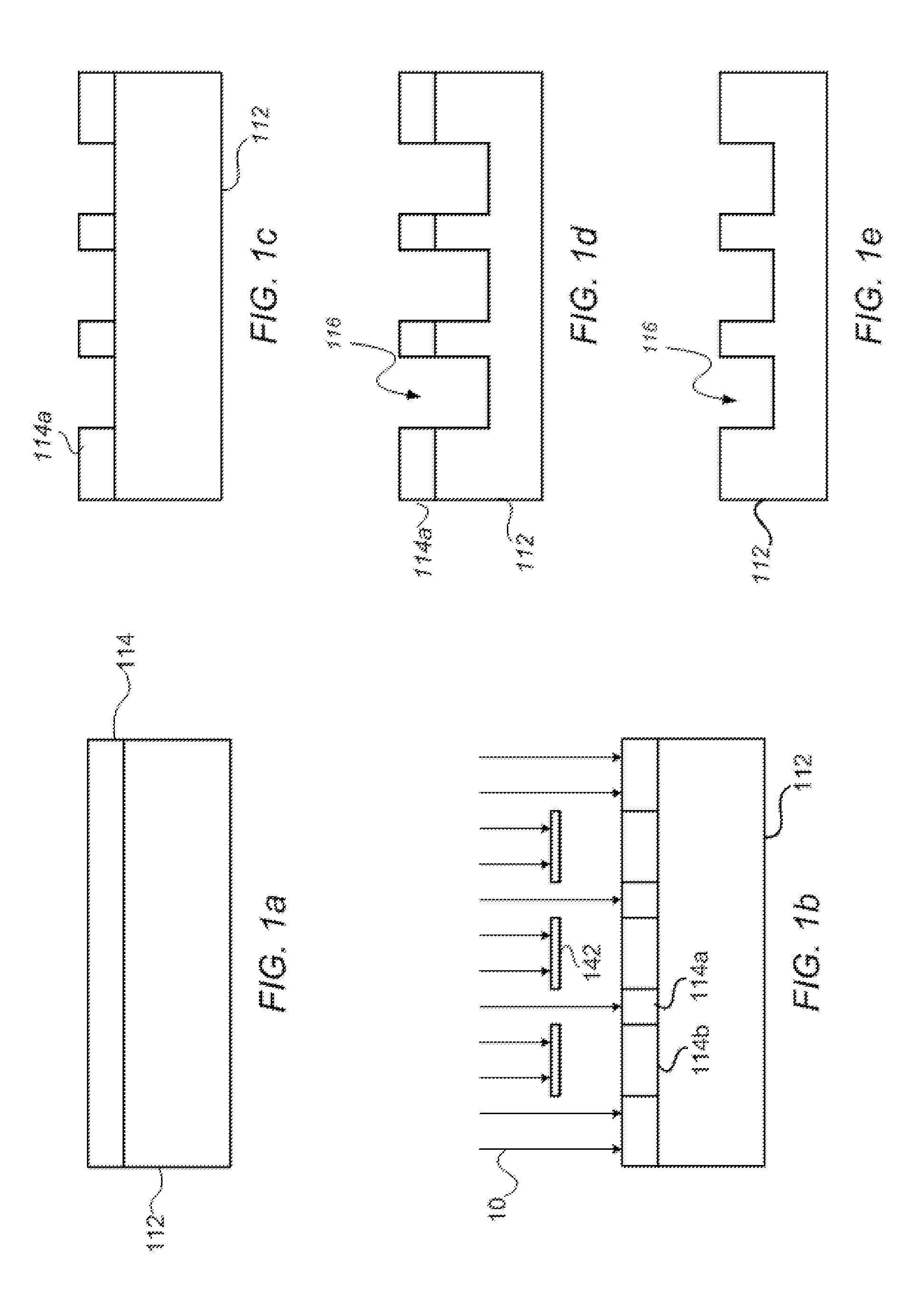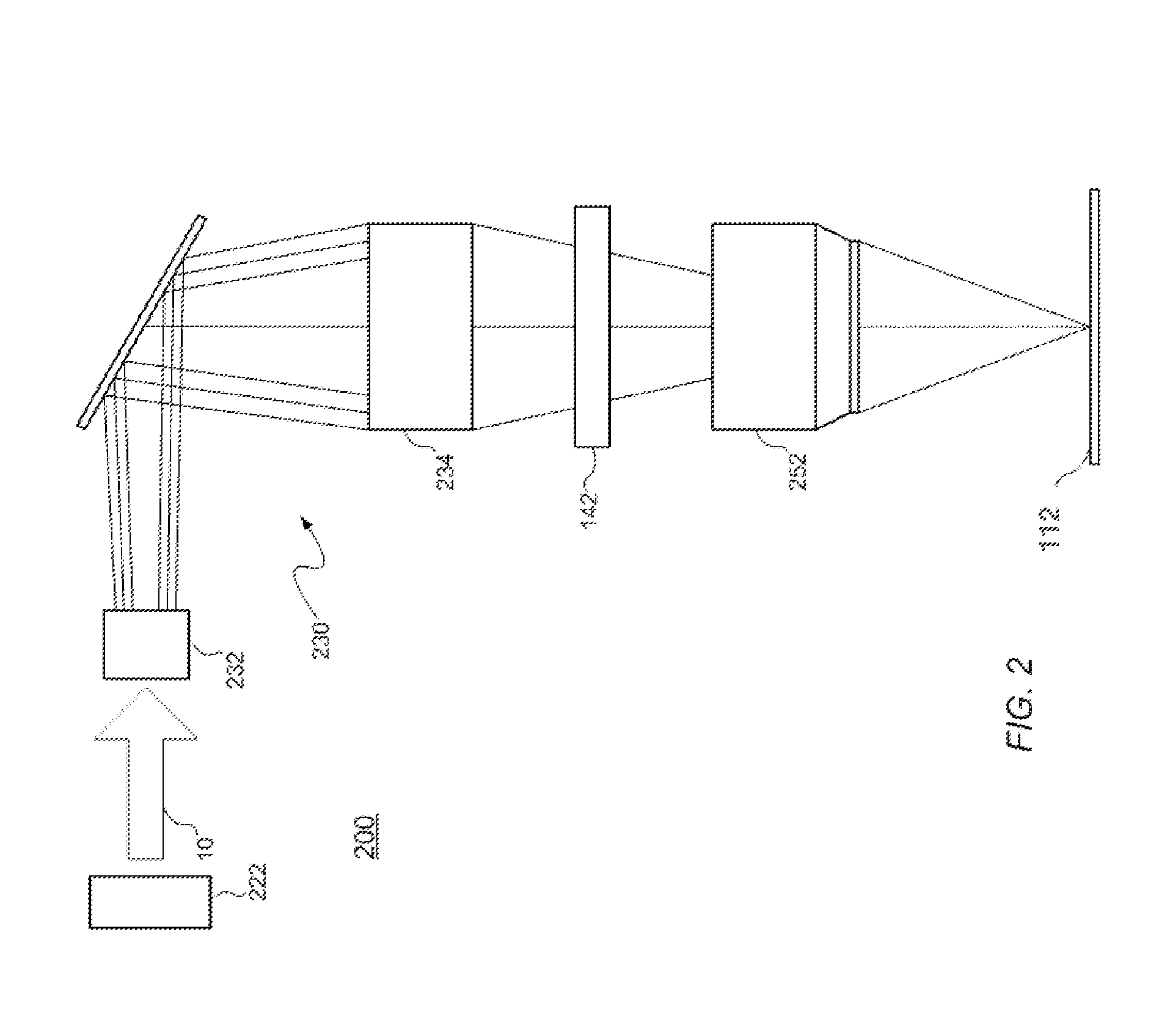Method and system for post-etch treatment of patterned substrate features
a technology of patterned substrates and features, applied in the field of device manufacturing, can solve the problems of disadvantageous roughness or variations due to lwr or ler, process is not without, and the roughness of the patterning substrate is not without, so as to improve the roughness of the set of substrates and improve the patterning. the effect of substrates
- Summary
- Abstract
- Description
- Claims
- Application Information
AI Technical Summary
Problems solved by technology
Method used
Image
Examples
Embodiment Construction
[0024]The present invention will now be described more fully hereinafter with reference to the accompanying drawings, in which preferred embodiments of the invention are shown. This invention, however, may be embodied in many different forms and should not be construed as limited to the embodiments set forth herein. Rather, these embodiments are provided so that this disclosure will be thorough and complete, and will fully convey the scope of the invention to those skilled in the art. In the drawings, like numbers refer to like elements throughout.
[0025]To solve the deficiencies associated with the methods noted above, novel and inventive techniques and systems for patterning a substrate are introduced. In particular, the present disclosure focuses on techniques involving ion implantation processes for improving the quality of patterning a substrate, such as improving LWR and LER in patterned narrow substrate features. The methods disclosed herein may be used in conjunction with lit...
PUM
| Property | Measurement | Unit |
|---|---|---|
| depth | aaaaa | aaaaa |
| depth | aaaaa | aaaaa |
| angle | aaaaa | aaaaa |
Abstract
Description
Claims
Application Information
 Login to View More
Login to View More - R&D
- Intellectual Property
- Life Sciences
- Materials
- Tech Scout
- Unparalleled Data Quality
- Higher Quality Content
- 60% Fewer Hallucinations
Browse by: Latest US Patents, China's latest patents, Technical Efficacy Thesaurus, Application Domain, Technology Topic, Popular Technical Reports.
© 2025 PatSnap. All rights reserved.Legal|Privacy policy|Modern Slavery Act Transparency Statement|Sitemap|About US| Contact US: help@patsnap.com



